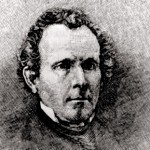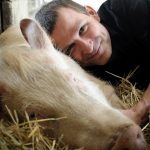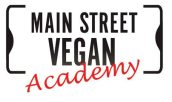When I ask new students at Main Street Vegan Academy about vegan food, they’re geniuses. Nutrition? Well informed. Animal rights? Check. But when the questions are about the history of our movement, even the best and the brightest can fall short. I believe it’s important that we know where we came from, and there’s plenty of grist for that mill, because eating plants goes back, well, about as far as we do.
Genesis — Whether someone looks at the Bible as history or metaphor, there’s no doubt that Eden was vegan. Even those animals we know as carnivorous ate plants in the Genesis story, and in chapter 1, verse 29, we read what’s been called “the original diet for humankind.” The King James translation reads, “And God said, Behold, I have given you every herb bearing seed, which is upon the face of all the earth, and every tree, in the which is the fruit of a tree yielding seed; to you it shall be for meat.” Another version (New Living Translation) states simply: “Then God said, “Look! I have given you every seed-bearing plant throughout the earth and all the fruit trees for your food.”
In the Garden of Paradise, fruits and nuts would seem to suffice. After the Fall, the green plants were added — fascinating, given their health benefits, that when sickness and death come on the scene, the antidote to many ills the flesh is heir to — green leaves and other vegetables — come, as well.
After the Flood, humans are allowed to eat meat, but believers who choose vegetarianism are of the mind that this was a temporary dispensation. Among these are members of today’s Seventh Day Adventist Church. The denomination recommends meatless diets, so about half of Adventists are lacto-ovo-vegetarians, and about a third of those are vegan, providing fascinating clinical trial groups for a great deal of research into the health effects of consuming different kinds of diet. The Adventist Health Study 2 is one of the largest and most recent, and in it, vegans come out ahead on virtually every level.
Pythagoras — This ancient Greek philosopher, mathematician (you know the theorem), and athletic coach was what we would today call a raw-food vegan. He required all his students to fast for 40 days prior to entering  his school, and adhere to an “unfired,” plants-only diet after that. Until the word “vegetarian” was coined in 1815, people who avoided meat were called Pythagoreans.
his school, and adhere to an “unfired,” plants-only diet after that. Until the word “vegetarian” was coined in 1815, people who avoided meat were called Pythagoreans.
India and ahimsa — Vegetarianism weaves its way through the religions born on the Indian subcontinent, Hinduism, Buddhism, and Jainism — that last one being the only world religion that requires all adherents to follow a diet without meat, fish, or eggs. These three are called the ahimsa-based religions. Ahimsa, literally “non-killing” or “nonviolence,” but expanded to encompass “dynamic harmlessness,” what American Vegan Society cofounder H. Jay Dinshah defined as “doing the most good and the least harm every day.” Ahimsa is the heart of veganism, and it was the impetus for the nonviolent revolutions of Mahatma Gandhi, Dr. Martin Luther King, Jr., and Nelson Mandela. When the British went to India in the mid-1600s, first as traders, later as colonizers, Indian philosophy started to make its way back to the English and to everyone who could read English. It was in this way that our movement gained some powerful proponents: Leonardo da Vinci, Benjamin Franklin, Percy and Mary Shelley, Voltaire, Johnny Appleseed, Sylvester Graham, Leo Tolstoy, George Bernard Shaw, John Harvey Kellogg, and Franz Kafka.

Mid-to-late 20th Century — Mahatma Gandhi exemplified nonviolence and a vegetarian ethic throughout his life and struggle for Indian independence. In 1944, a group of committed vegetarians were sufficiently troubled by the connection between the dairy and veal industries that Donald and Dorothy Watson and a small band of followers started The Vegan Society (UK) and coined the term “vegan,” defined today by the Society as “a way of living which seeks to exclude, as far as is possible and practicable, all forms of exploitation of, and cruelty to, animals for food, clothing or any other purpose.” In 1960, Jay and Freya Dinshah founded the American Vegan Society. I see 1944-1960 as veganism’s generation 1.
Generation 2, 1960s/70s saw the influence of comedian, civil rights activist, and juicing/fasting advocate Dick Gregory — still performing at age 84. In 1968, a Minnesota chiropractor, Dr. Frank Hurd, and his wife, Rosalie, wrote the classic vegan recipe book, Ten Talents. The Farm, a once huge Tennessee vegan compound founded in 1971 by hippie prophet Stephen Gaskin, was the site of the country’s first soy dairy; The Farm continues today with a smaller population and a very successful vegan publishing house, The Book Publishing Company. The publication of Frances Moore Lappe’s groundbreaking book, the first to draw attention to the animal agriculture/world hunger connection, Diet for a Small Planet, preceded the founding of FARM (Farm Animal Rights Movement) in 1974 by Holocaust survivor Alex Hershaft, and The North American Vegetarian Society, host of the 1975 World Vegetarian Congress in Oreno, Maine. That event brought over 2000 vegetarians and vegans to the States for the largest such gathering in history. That same year, philosopher Peter Singer wrote Animal Liberation and coined the term, “animal rights.”
Generation 3, 1980s/90s brought the founding of People for the Ethical Treatment of Animals (PETA);

the 50-million-selling mega-book, Fit for Life, a celebration of nearly vegan eating and lots of fruits, vegetables, and raw foods; Dr. Dean Ornish’s revolutionary work showing that coronary disease, one believed unchangeable, could indeed be reversed; and the book that brought veganism to thousands, John Robbins’ Diet for a New America. The 80s showed a strong vegan presence in the punk rock culture, continuing to this day, and Farm Sanctuary was founded, the first ever sanctuary for farmed animals. It was in the 1990s that cattle-rancher-turned-vegan Howard Lyman appeared on the Oprah show, eliciting her comment, “I’ll never eat another burger,” and the famous lawsuit against Winfrey and Lyman by Texas cattlemen. It was a long battle, but the queen of talk and the “mad cowboy” ultimately prevailed. In the final decade of the 20th Century, Caldwell Esselstyn, Jr., MD, did the pioneering work showing that heart disease could be reversed not only by “diet and lifestyle,” as Ornish had presented, but by diet alone. And in 1999, fifteen-year-old Nathan Runkle founded Mercy for Animals.
We’re now in Generation 4, and this is a boom time for veganism. Skinny Bitch converted millions to ethical veganism after its publication in 2005, and The China Study brought on hundreds of thousands more from the health side. Influential cookbooks such as Veganomicon, The Oh She Glows Cookbook, Forks Over Knives, and Vegan Cupcakes Take Over the World played their important role, joined by influential documentaries such as Earthlings, Vegucated, Forks Over Knives, Fat, Sick & Nearly Dead, and Cowspiracy. The Internet fueled the growth exponentially, with blogs, podcasts, and social media disseminating information furiously around the planet. Something that was once seen as a “pocket movement” in the UK, India, and the U.S. and Canada has become decidedly international, with a strong vegan presence in much of the world. Israel, Germany, and Italy are major players on the vegan scene, and Eastern Europe is adding much to the knowledge and popularity of raw veganism. The 2000s have also been a decade-and-a-half of undercover videos, shown both online and on television, so that abuse of farmed animals is something large numbers of people are aware of, and animal rights is widely viewed as a viable social justice movement.
Scores of plant-based athletes have come forward, offering evidence that for distance running, sprinting, triathlon, body building, weight lifting, wrestling, hockey, football, baseball, tennis, and virtually every other athletic endeavor, plants not only “have enough protein,” but enhance athletic performance with their anti-inflammatory and pro-recovery properties. Physicians’ Committee for Responsible Medicine has been behind numerous studies showing the efficacy of a plant-exclusive diet in the prevention and treatment of diabetes and other ills, as well as working to end the use of animals as experimental subjects, culminating in this year’s enormous victory that no more medical schools in the U.S. or Canada are using animals to train physicians.
Dr. Michael Greger’s 2015 NY Times Bestseller, How Not to Die, catalogs the research to date on the public health potential of this way of eating, work Dr. Greger continues daily on his website, www.nutritionfacts.org. This is also the era of advancement in vegan food products, such as meats,

cheeses, milks, and specialty foods from marshmallows to whipped cream. Venture capital from investors no less impressive than Bill Gates is funding companies seeking to make meatier meats and a truly egg-like egg. As Bruce Friedrich of The Good Food Institute and New Crop Capital explains it, New York City’s carriage horse population went from hundreds of thousands to a few thousand between 1901 and 1905. Was it because everyone wanted to be stop cruelty to horses? No. It was because of Henry Ford, a horseless carriage, a better alternative. This is the role these vegan versions of familiar foods will play in the future — a future that I believe will be so close to vegan, it just might prompt Pythagoras to want to reincarnate.
Victoria Moran is Peta’s new “Sexiest Vegan Over 50,” and the author of Main Street Vegan, The Love-Powered Diet, The Good Karma Diet, and Compassion the Ultimate Ethic. Mentored by the late historian of the vegetarian/vegan movement, Professor Rynn Berry, Victoria teaches “History of the Vegetarian/Vegan Movement” at Main Street Vegan Academy and at Vegan Summerfest. She is the featured historian for the National Vegetarian Museum, about to open in Chicago. Here is a link to the video she made for the Museum’s traveling exhibition: https://vimeo.com/184872242. At 5 minutes, it is indeed a brief history of this movement.



Folk who wish to discover more about our history could listen to my radio series, broadcast on London’s art station Resonance FM and freely downloadable around the world. I interview expert historians and travel to some of the places the story unfolded – including India. The series is 15 episodes, each 30-45 minutes long.
http://theVeganOption/veghist
Folk who wish to discover more about our history could listen to my radio series, broadcast on London’s art station Resonance FM and freely downloadable around the world. I interview expert historians and travel to some of the places the story unfolded – including India. The series is 15 episodes, each 30-45 minutes long.
http://theVeganOption.org/veghist